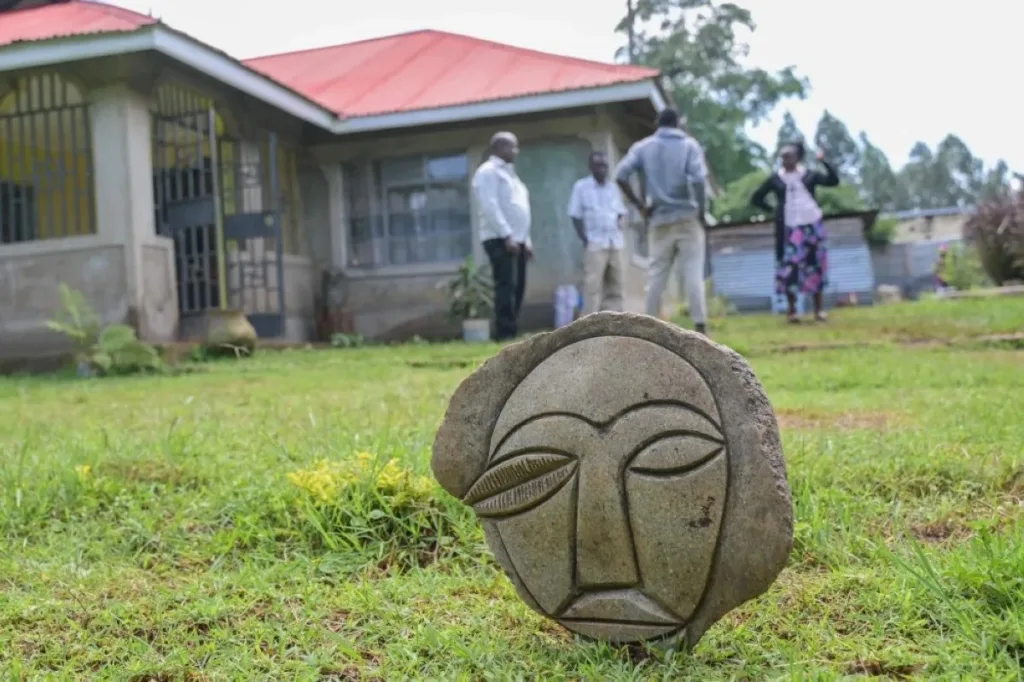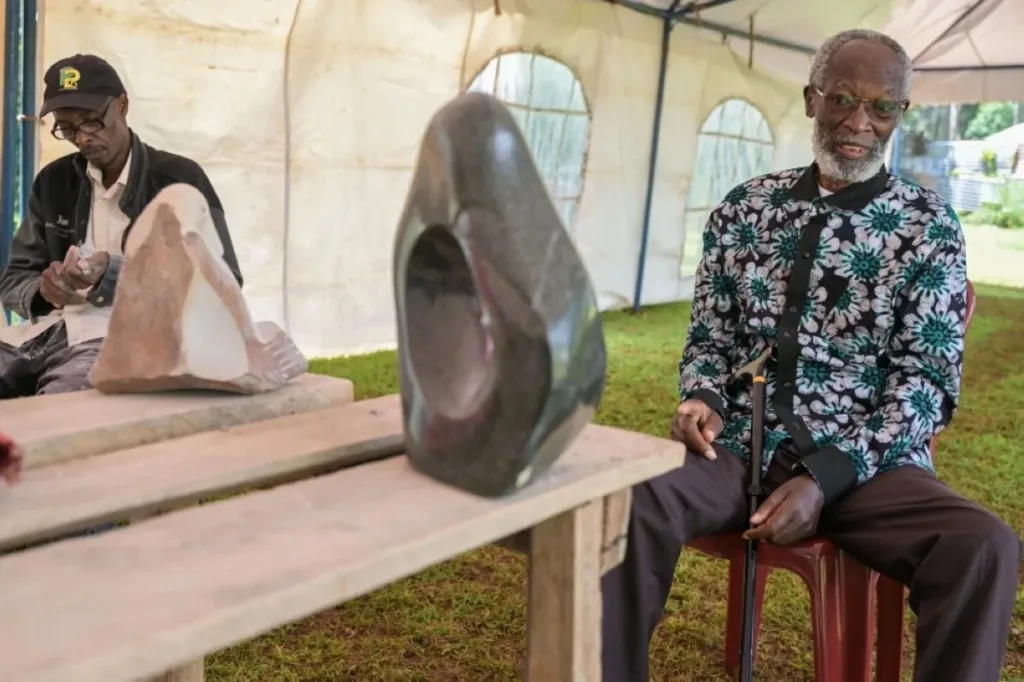Renowned Kenyan sculptor, Elkana Ong’esa, famous for his monumental stone creations exhibited globally, advocates for increased recognition of African art both domestically and internationally. Despite its profound influence on Western art, as evident in the works of Pablo Picasso, African art, according to the 79-year-old artist, has been somewhat neglected.

In an interview covered by AFP at his residence in Tabaka, nestled in the hills of Kisii county, western Kenya, Ong’esa expressed his sentiments. His nature-inspired sculptures have graced prestigious venues like the UNESCO headquarters in Paris, the United Nations in New York, and esteemed galleries worldwide.
However, he notes a significant disparity in the valuation of African art compared to Western counterparts, with both local and foreign collectors hesitant to invest in African pieces. Ong’esa identifies another hindrance to the flourishing of Kenyan art—the lack of ample support from the government.

“The Kenyan government does not give enough support to artists,” he said, reflecting on a 2014 setback, he recounted the bureaucratic obstacles that thwarted his sculpture’s prominent display at the Smithsonian Folklore Festival in Washington. The incident involved a colossal granite sculpture, offering a substantial sum of 1.2 billion Kenyan shillings, facing transport issues due to alleged governmental interference.
“If the sale had gone ahead, it would have entered the record books and Kenyan art would be in a different league”, he stated

Born into a family of craftsmen, Ong’esa’s journey from making clay toys as a toddler to pursuing advanced studies in sculpture at Makerere University and McGill University in Canada has shaped his artistic perspective. He acknowledges the transformative impact of encountering diverse art forms, such as the stone carvings of Inuit sculptors and the use of negative space by British artist Henry Moore.

Despite these global influences, Ong’esa’s work retains a distinct African identity. Kisii stone, a medium exclusive to western Kenya, serves as his canvas, and his sculptures often incorporate symbols from African myths and songs. For instance, the monumental granite sculpture Enyamuchera (Bird of Peace in the Kisii language) at the UNESCO headquarters draws inspiration from the fiscal shrike, a bird native to Sub-Saharan Africa.
“That sculpture says something about me as a person,” he said. “It shows what is in me as an artist, as a Kisii.”. The artist, a grandfather of five, articulates his passion for his craft, stating:
“When you cut a stone and see the inside, it is so beautiful, it is so exciting.”

In addition to his international recognition, Ong’esa emphasizes the importance of creating art that resonates locally. His sculptures grace Kisii’s streets, his garden where he imparts stone carving skills to young artists, and a museum dedicated to workshops and the exhibition of African art.
Despite facing health challenges that temporarily halted his artistic pursuits for seven years, Ong’esa remains resilient. Now, as he slowly resumes carving smaller sculptures due to physical constraints, he expresses hope for an improvement in his health.


